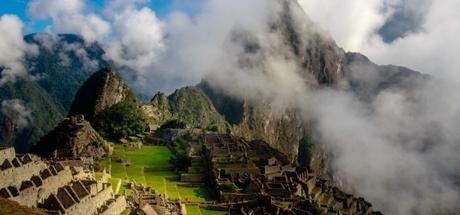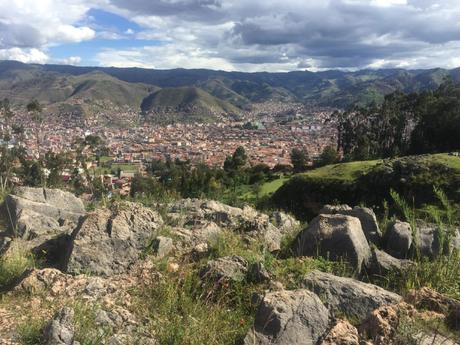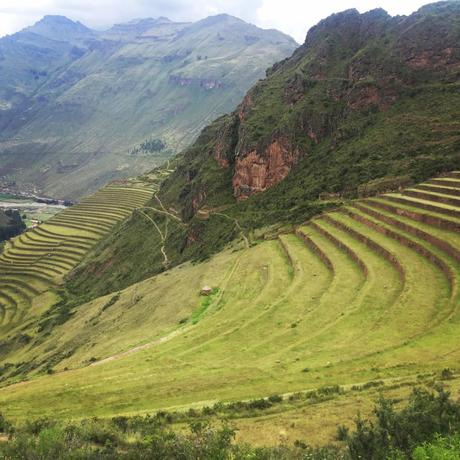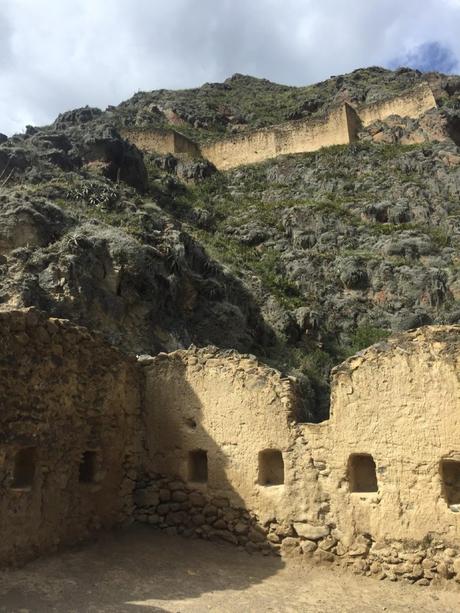
The Inca Trail might be the first thing people think of when planning a hiking trip in Peru. Yet, for those looking to avoid the crowds, explore more of the area, or simply want a shorter trek, there are plenty of day hikes with spectacular views, Incan ruins and llama hoof prints to satisfy the adventurous traveler.
Sacsayhuaman and Cusco Ruins
Most visitors to Machu Picchu will spend a few days in Cusco. But, the city is more than just a base for visiting Peru's most famous site. Sitting over three thousand meters above sea level, going anywhere in Cusco can feel like a trek. But, Sacsayhuaman and the Cusco ruins, in particular, are worth getting a little breathless over. Starting in Sacsayhuaman you can take a loop around the outskirts of the city visiting various ruins and fortresses. The start of the trail is within walking distance from Cusco city center, but you can also find a taxi to take you to the base of the ruin. Wander through Sacsayhuaman, an old military base of the Incan Empire, and enjoy the view of the city before following the ancient road of Incan fortresses, granaries and sites of worship nestled in the mountains that surround the city.

Pisac Ruins
This hike has it all, stunning views of the sacred valley, ancient cities and plenty of places to see the famous Incan Agricultural terraces up close. From the market, walk uphill toward the city gardens and pay a small entrance fee. From there, follow the trail steeply uphill. Catch your breath while taking in the valley below and then climb crumbling stairs through ancient houses and temples. The trek ends when you reach the grassy agricultural terraces. Either hike back the way you came or find a taxi on the road near the terraces to take you back to the city.

Pinkuylluna
The town of Ollantaytambo is the gateway to Machu Picchu. But, more than just a place to catch the train to the ancient city, Ollantaytambo is worth spending a couple of days in. The town houses an Incan fortress and agricultural storage site. It might not be as grand as nearby Machu Picchu but it is quieter! A trail connects a couple of different ruins, making this a doable two-hour trek. From the central plaza, walk down Calle Lares until you see the stone steps of Pinkuylluna. The storehouses along the hill were used for storing grains in ancient times. Visiting Pinkuylluna
is free, but this also means that the trail is not very well maintained. Be wary of crumbling steps!

Pumamarca
This five-hour hike in Ollantaytambo gives stunning views of the sacred valley and is hilly enough to get your heart pumping. This beautiful path leaves town from the main road and then follows a wide dirt trail by the river. After a couple of kilometers, the trail runs steeply up a mountain. Follow the trail markers to see some gorgeous waterfalls and view the ancient aqueducts that rival those of the Romans.
Aguas Calientes to Machu Picchu
Don't want to hike the Inca Trail but still want the experience of arriving at the ancient city on foot? It is possible to walk from the town of Aguas Calientes, where you'll get your ticket for Machu Picchu, up to the ruins themselves. From the square behind the ticket office, follow the signs to Machu Picchu. You'll walk along the road for a few minutes before switching on to a narrow dirt trail. It takes about 1-2 hours to get to the tops and has some lovely views of the valley below. Compared to coming from the Sun Gate, this trail is pretty quiet. Be prepared to do some hiking once you get to Machu Picchu, too!
The Andes mountains are one of the most beautiful ranges in the world and are steeped in fascinating history. You'll find some of the best-preserved ruins of the ancient Americas on the slopes of the Andes. Hiking is a great way to improve your cardio health and lung capacity while getting to learn about the history of the area.
Be sure to check in the tourist office in each town before you go to pick up a map and learn about any trail closures or detours. And make sure you give yourself a few days to adapt to the altitude before embarking on a challenging hike-as the locals say, poco a poco (little by little).

